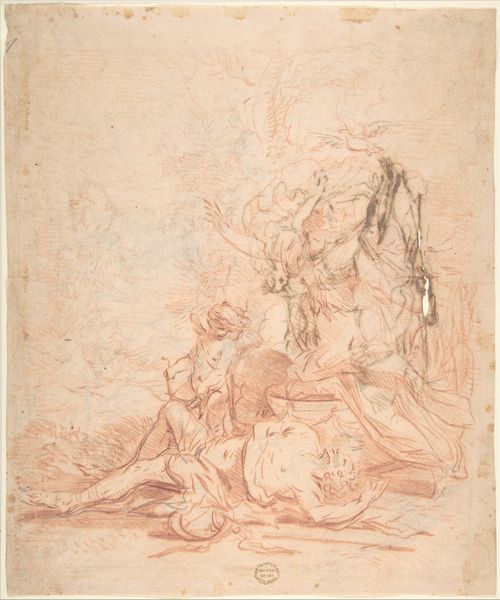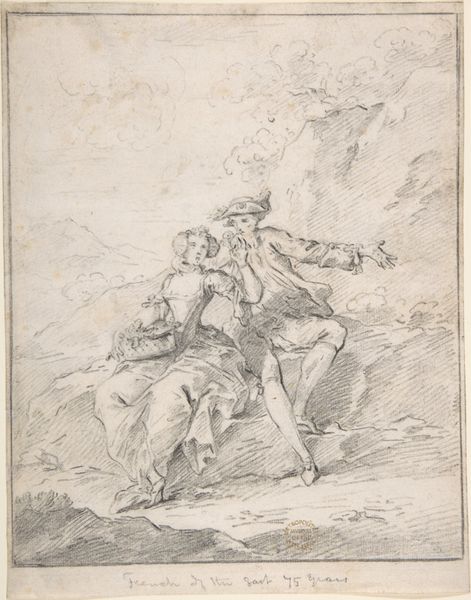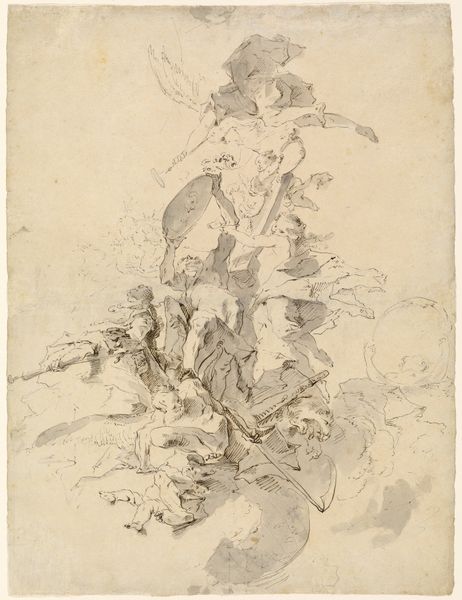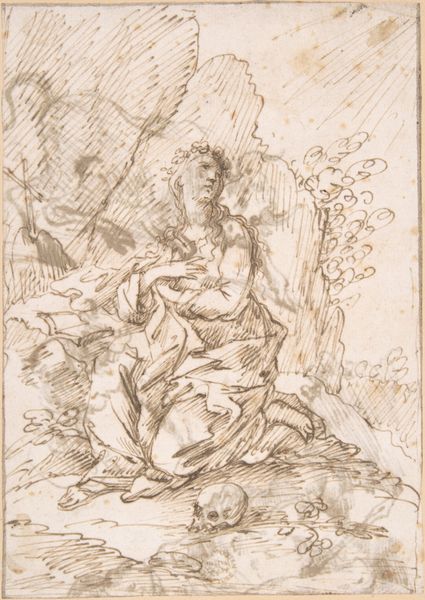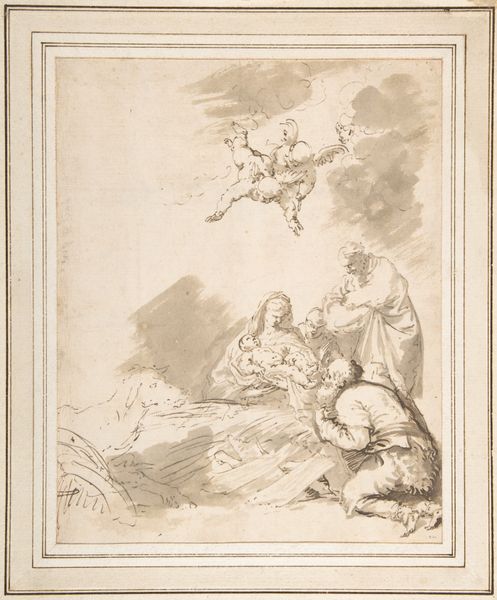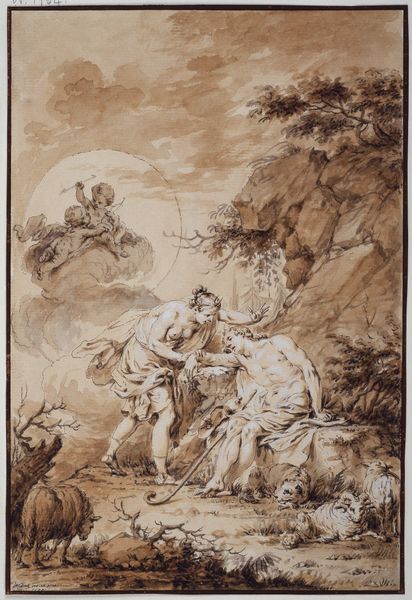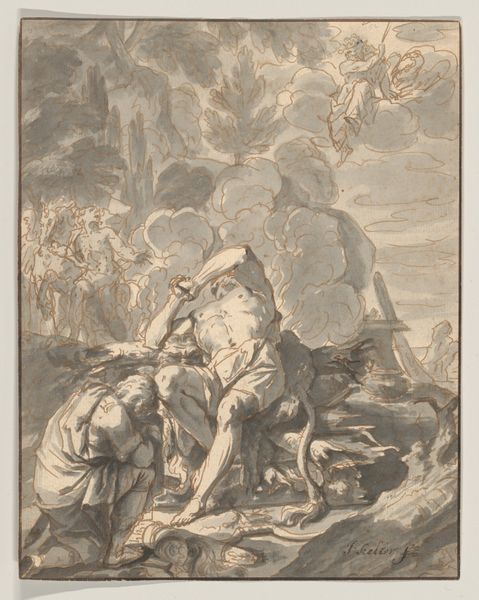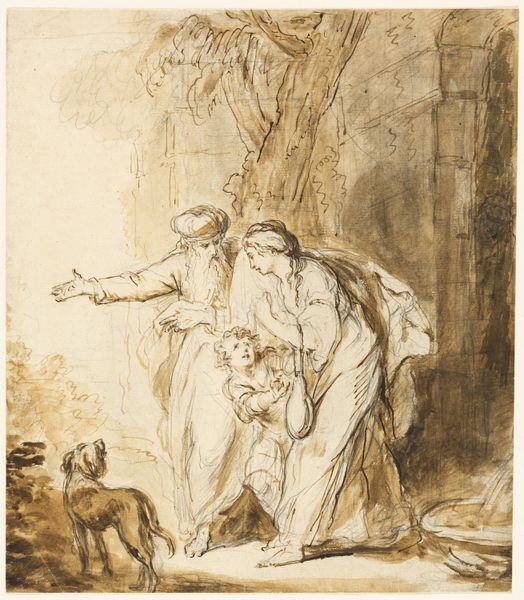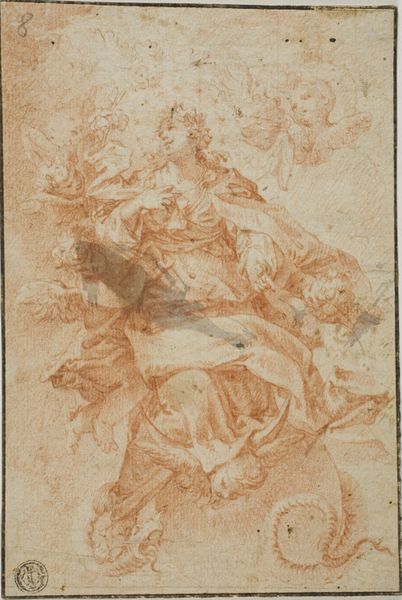
drawing, paper, ink, graphite, pen
#
portrait
#
drawing
#
narrative-art
#
ink painting
#
figuration
#
paper
#
ink
#
graphite
#
pen
#
academic-art
Dimensions: 179 × 134 mm
Copyright: Public Domain
Editor: This drawing, simply titled "Couple Beside Tree" by Raymond de Lafage, appears to be done in ink, graphite and pen on paper. The monochromatic palette lends it an antique feel, like looking at a rediscovered fragment. What can you tell me about it? Curator: Considering Lafage's historical context, it is important to remember the institutional backdrop of academic art training during his time. Drawings like these were integral to the artistic process, not merely preparatory but valued exercises showcasing mastery. The "Couple Beside Tree," with its dynamic figures and expressive use of ink, embodies the kind of skill that was highly prized within the French Academy. How do you think the act of drawing itself played into the politics of art during the 17th and 18th centuries? Editor: I see your point about skill and the Academy! But doesn't the subject matter itself—a couple in what looks like a moment of emotional distress—suggest more than just technical practice? Is there any sociopolitical message conveyed by this? Curator: Potentially. Think about the narratives circulating at the time. Were there classical tales that championed fidelity, familial love or moral narratives with such emotional drama? Often the effectiveness of these drawings depended on the social understanding of classical art or current political values. A seemingly simple "couple" might then represent ideal citizenry or, conversely, critique it by illustrating moral failing or class issues. Is there something specific that interests you? Editor: I find myself wondering about the individuals it may depict. I mean it's very emotionally rendered, yet also seems somehow ambiguous to the viewer. Curator: Right, the lack of a clear narrative does leave space for speculation. This may have been deliberate; sometimes it was a subtle political challenge to what was typically displayed in exhibitions. Now, thinking about its possible original audience and venue, the work asks us to unpack who gets to express certain emotional and physical forms. I've really found our chat about the work very enlightening! Editor: Agreed. The discussion of academic expectations vs the expression and reception is an important point that I have learned.
Comments
No comments
Be the first to comment and join the conversation on the ultimate creative platform.
